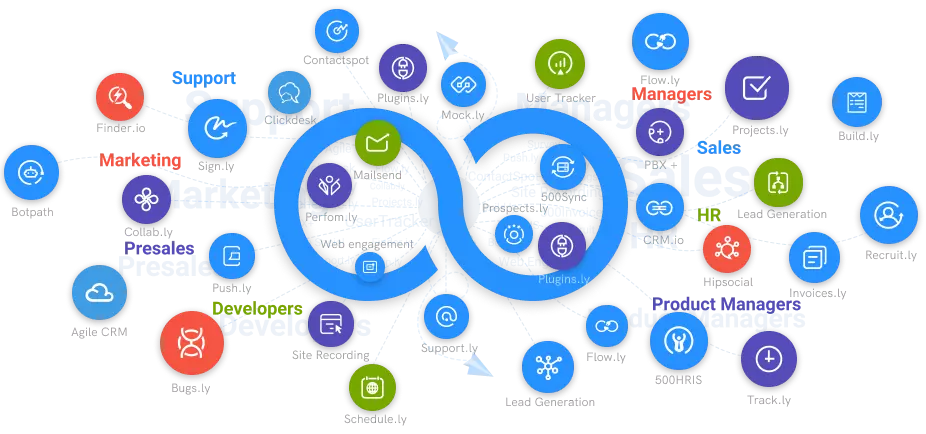How Personalized Push Notification Helps?
Get to know about personalized push notification and how it can help your business to target more customers.
#1
Access Multiple Websites
#2
Drip Sequence Automation
#3
Create messages, notifications, reminders using built-in templates
#4
Increased Visitor Traffic
#5
Effective Audience Classification
#6
Scheduled and Automated Messages
#7
Extensive Data Analysis
#8
Affordable Pricing
#9
Unbelievable pricing - the lowest you will ever find
#10
Everything your business needs - 50 apps, 24/5 support and 99.95% uptime
Your return on investment ROI will be better if your push marketing efforts are more focused and customized. It appears to be straightforward, doesn't it? But how can highly segmented, targeted, and customized communications appear? And how do you get the data and insights required to set them apart from competitors? We'll guide you through some fantastic push notification examples in this post to show you what's possible. We'll also show you how to target and personalize your posts based on user regions and segments.
What Really Makes a Personalized Push Notification?
Many firms begin with one-time push notification campaigns. These are useful for notifying Android or iOS app users about a new offer, such as one for Back to School. You must go deeper to genuinely interact with and give value to users. This is where user segmentation, customization, and geo-location-based targeting come in. Let's look at some nice app notification examples.
1. User-specific & Targeted Push
You may categorize users based on where they drop off throughout the sign-up process. Sometimes a user completes two of the three steps to sign up for your app but does not opt-in for location-based pushes. You may utilize a targeted push campaign to get them back to opt-in at a later date. Customers, on the other hand, frequently opt-out of allowing you to gather their location information after downloading your app. You may send them a customized screen message before that point to explain why opting in is advantageous to them. It is critical to provide a value proposition (e.g., what they get if they finish the onboarding flow). Access to discounts, order updates, or in-stock products at a store near you, for example.
2. Individualization
Personalized push notification campaigns are frequently used to recover abandoned carts. If an app user forgets anything in their basket, you may contact them two hours later and say, "Hey, you forgot something." The most effective push notification texts convey a feeling of urgency. This method necessitates the gathering of data on the backend. Your message might mention that a certain item in their cart is quickly running out. PushNinja optimizes push notifications as part of their email marketing strategy. It allows them to focus their efforts on each consumer touchpoint. PushNinja sends out an email announcing a new promotion. When the deal is about to expire, the firm sends a push message to app users.
3. Push Alerts Based on Geolocation
Geo-location-based push notifications may be used to give an extra degree of customization to an iOS or Android push campaign message. Brands can deliver personalized push notifications based on a user's location in two ways:
Notifications depending on location - These pushes are delivered to app users depending on data obtained on the backend. It might be based on a customer's IP address or data submitted into order forms (e.g., city, region, and country). Geotargeting sends push notifications to users who live in a specified place. Keep in mind that it is a larger means of targeting than the following form of push notification.
Geo-triggered push notifications - In this scenario, push notifications are activated when users physically present in real-time near a specified geographic region. Geofencing or beacons are used to carry out this sort of targeting. Geofences may be used to map out a "fence" around an area by utilizing GPS coordinates or RFID signals. When users travel within the geographical fence, a push notification is delivered. Beacons are small devices that can broadcast Bluetooth Low Energy (BLE) signals to a user's nearby mobile device. This technology is most commonly utilized in app creators' shops or other physical venues.
Here are a few industry-specific push notification examples for geo-location targeting. Airports and transportation: Travel marketers can target customers who have spent more than two hours in an airport, for example. Time-based tracking suggests that someone is most likely waiting for a flight.
Best Practices for Push Segmentation, Customization, and Targeting
If you're just starting out, you might be asking what the greatest template is for launching a highly focused campaign is. We've already discussed utilizing pushes to increase opt-in rates. So, what comes next?
1. Begin With Segmentation
Once you've identified and understood distinct user groups or even app user personas, you can run tests to see how they engage with your app and other channels once a push message has been sent out. To discover what works best, you need collect data on the backend and incorporate analytics and A/B testing tools.
2. Proceed to Customization
At this stage, you can start targeting and sending tailored messages to various user cohorts. Then, separate those tailored messages based on user groups. At a higher level, every opportunity to use their first name can increase the effectiveness of your campaign. Send a recommendation or a new arrival for that product a few months later if a client buys one sort of product after your last push. For example, "Hello Susan, We have size 8 slim jeans in a fresh summer hue. Look them over before they're gone.”
3. Add Location-based Targeting
The sort of targeting you select is determined by your company's industry and aims. Geofencing is useful for quick-service businesses (e.g., for regional customers that get close to a specific location). If a consumer is close to a physical retail location, beacon targeting may be more effective.
4. Complete Tracking and A/B Push Notification Testing
We recommend A/B testing the time or content of your Android or iOS push notification messages while you're just starting started. This is because you may not have set up targeting or segmentation yet. Starting with timing allows you to see when individuals are most likely to open and interact with your pushes. Experiment to see if individuals react differently to a push on Tuesday afternoons than they do on Wednesday mornings. Then, determine the ideal times to send out push notifications in order to get the maximum level of interaction. You may test language, pictures, emojis, and other content elements to determine what resonates the best with different consumer categories. Experiment with segmented targeting from there. Then, move on to customization testing.
Conclusion
Understanding what content resonates with various users leads to personalization. If you have more user data, conduct your own research to determine who opened a certain push and develop targeted groups based on that information. Finally, you may start identifying particular geolocation-based targeting possibilities to evaluate and experiment with.





